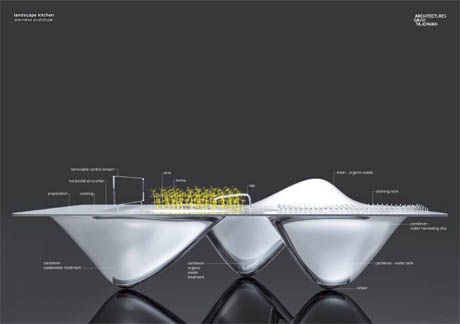
IMAGE: David Tajchman’s “landscape kitchen 2.0”
Architect David Tajchman‘s proposal for a “landscape kitchen 2.0” is mobile, environmentally conscious, and sleek, if a remarkably similar in form to Zaha Hadid’s 2005 Aqua Table. Sadly, its online description is both poorly translated and hyperbolic in its claims – for example, unless he just forgot to label the refrigerator and oven, the design doesn’t really “concentrate in a single object all the needs of a kitchen.” Nonetheless, Tajchman’s landscape kitchen presents some genuinely interesting ideas and possibilities.
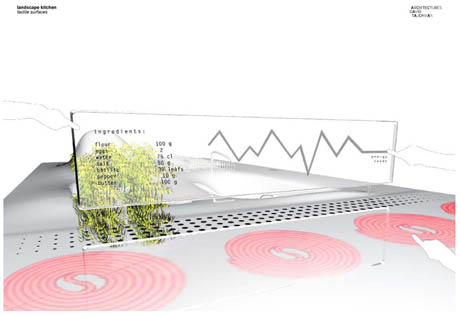
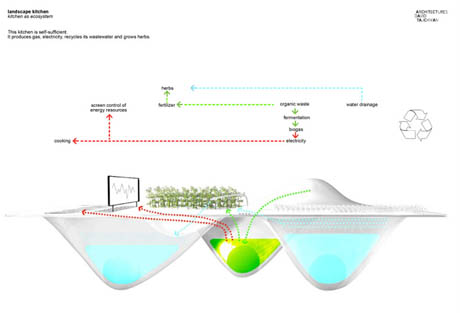
IMAGES: David Tajchman’s “landscape kitchen 2.0”
The fluid surface of the table does indeed look like a miniature landscape, with a lagoon-sink, raised hill waste-disposal, and a forest of herbs planted directly into the surface. Waste water treatement is built into one of the “legs” and a water tank into another, while the third houses an organic waste fermentation tank to produce fertilizer and bio-gas. While not completely self-sufficient (the water in the tank must presumably come from elsewhere), Tajchman’s landscape kitchen would form a relatively sustainable ecosystem, generating enough water, fertilizer, and electricity to grow the herbs, do the cooking, and even fuel a touch screen that displays recipes as well as energy usage.
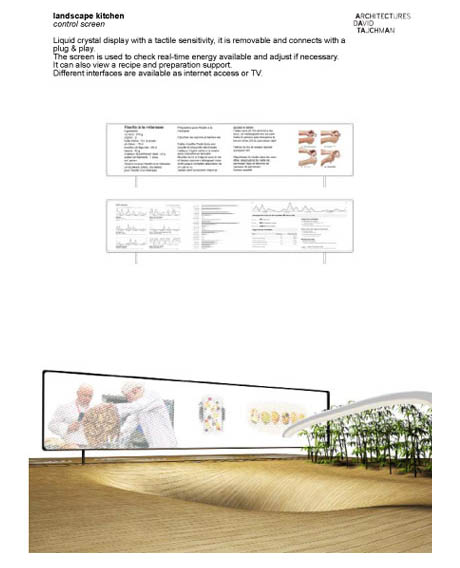
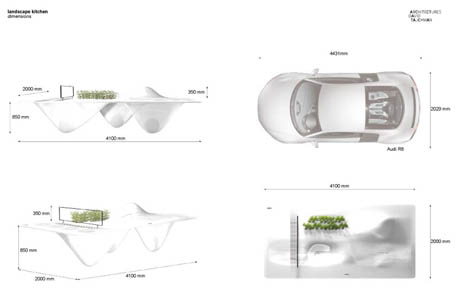
IMAGES: David Tajchman’s “landscape kitchen 2.0”
Tajchman’s proposal is both car-sized and mobile – wheels attached to the three legs and the lack of plumbing or electrical constraints allow it to be moved around freely, at least in an open-plan house. Meanwhile, the landscape form combined with the ability to grow your own herbs is intended as a visual mnemonic, reminding cooks to ask “legitimate questions about the origin of ingredients.”
The most interesting aspect of the landscape kitchen, however, is as a barometer of contemporary priorities. Updating the kitchen table – potentially today’s most powerful symbol of idealised domesticity – to include mobility, sustainability, and a concern with the origins of the food we eat, is both an interesting design intervention, and an anthropological marker.
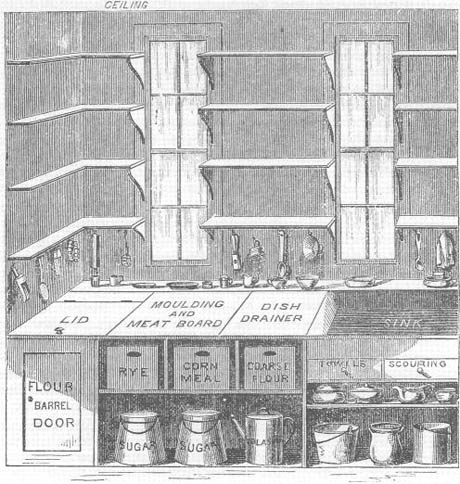
IMAGE: Catharine Beecher (sister of novelist and abolitionist Harriet Beecher Stowe) proposed this model kitchen, based on early ergonomic theories, in her 1869 treatise The American Woman’s Home.
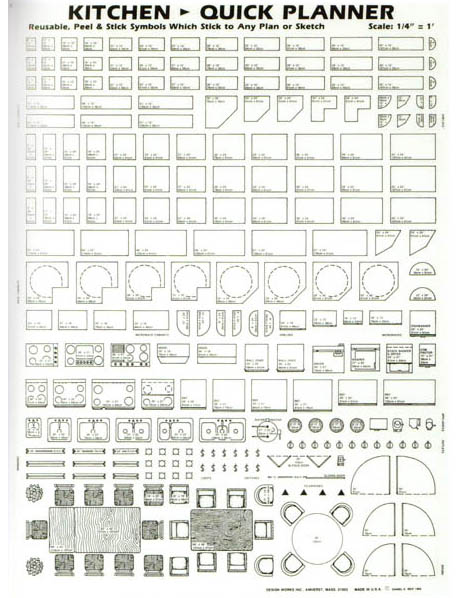
IMAGE: Kitchen Quick Planner. Planning kit by Design Works Inc., 1992, from Speed Limits (which accompanied an excellent exhibition of the same name, still on display at the CCA in Montréal for a couple more days.)
Indeed, the evolution of kitchen design is a fertile guide to the cultural landscape, from Christine Frederick’s production line efficiency to Beatriz Colomina‘s Cold War-era weaponisation of the domestic. As architect Carolyn Steel describes in Hungry City, the “repressed” service sculleries of Victorian Britain were the product of the prevailing sentiment that “cooking was […] a source of embarrassment” and “an unwelcome reminder of baser bodily realities.” Meanwhile, during the economic exuberance of the recent boom, consumers demanded eat-in “trophy kitchens,” complete with expensive granite countertops and brand name appliances.
Kitchen geographies both reveal and shape the way we live. Tajchman’s proposal seems like a step in the right direction, but it leaves me wondering: What could – and should – today’s kitchens actually look like?

